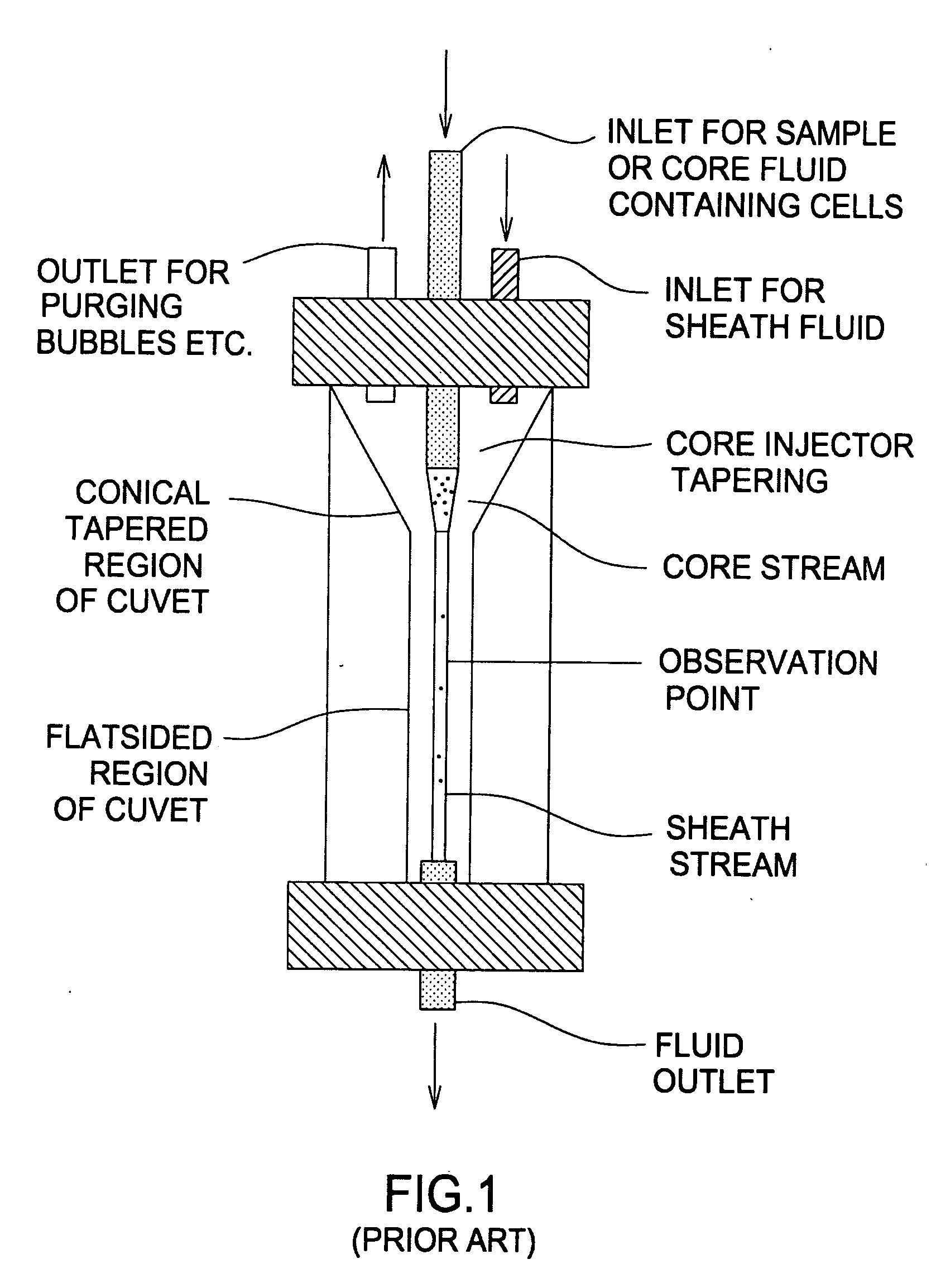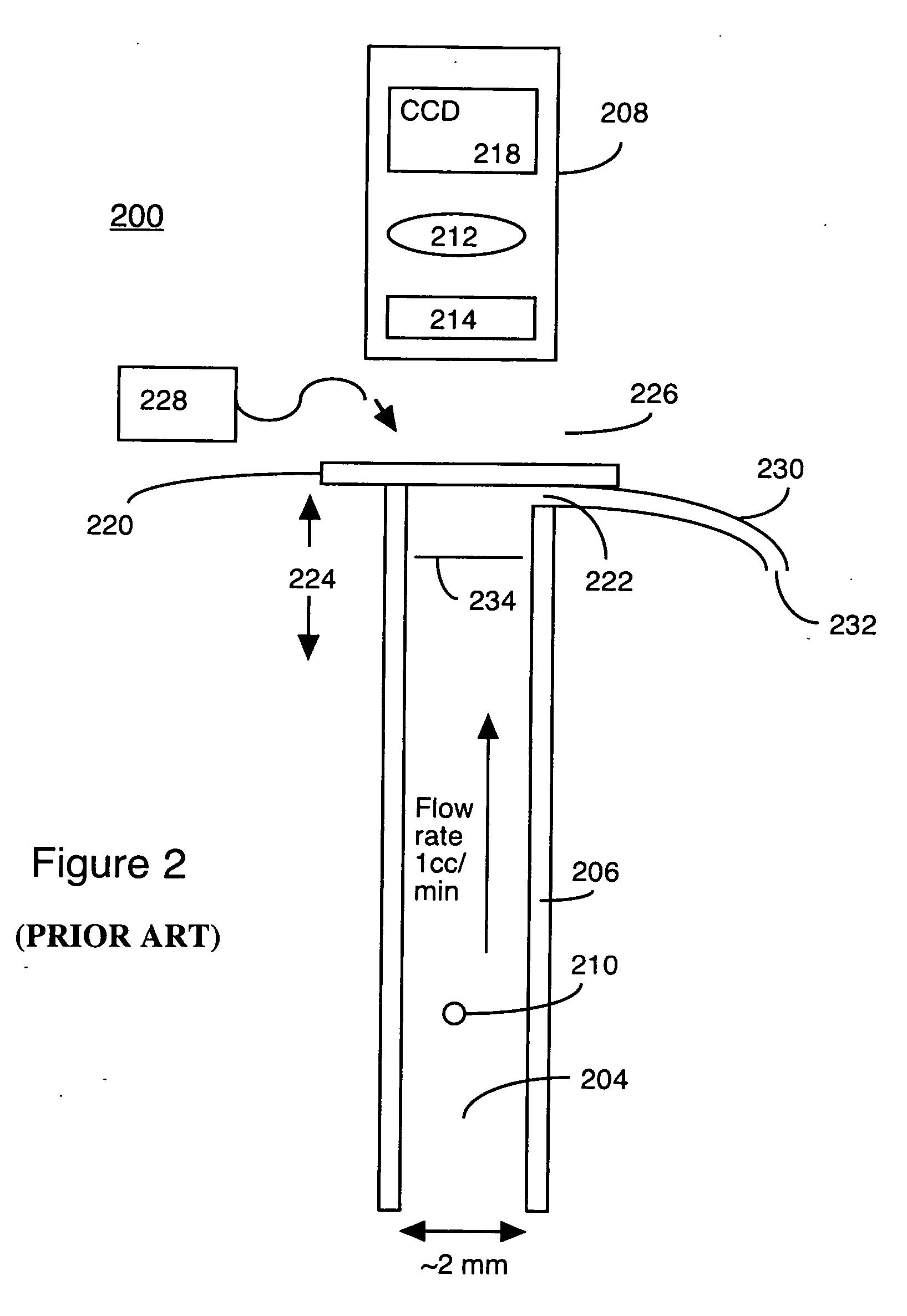High resolution imaging fountain flow cytometry
a high-resolution, flow cytometry technology, applied in the field of high-throughput analysis of imaged particles, can solve the problems of unsatisfactory sensitivity, high cost, and inability to achieve high-resolution image quality, and achieve the effect of high sensitivity, low cost and high throughpu
- Summary
- Abstract
- Description
- Claims
- Application Information
AI Technical Summary
Benefits of technology
Problems solved by technology
Method used
Image
Examples
Embodiment Construction
[0047] The present invention includes apparatus and methods for high resolution imaging of fluorescent particles in a fountain flow cytometry set up. (A precursor invention, described in U.S. patent application Ser. No. 10 / 323,535 by the present inventor, is shown in Prior Art FIGS. 2 and 3. This previous invention incorporates detection, but not high resolution imaging.) To review the flow cytometry detection process, a flow channel defines a flow direction for samples in a flow stream and has a viewing plane nearly perpendicular to the flow direction. A clear volume between the illuminated flow volume and the imaging optics is provided in some embodiments. A beam of illumination is formed as a column having a size that can effectively cover the viewing plane, and illuminates the flow end on or nearly end on. Imaging optics are arranged to view the focal plane to form a low-resolution image of the multiple fluorescent sample particles in the flow stream. In this step, particles of ...
PUM
| Property | Measurement | Unit |
|---|---|---|
| diameter | aaaaa | aaaaa |
| distance | aaaaa | aaaaa |
| transparent | aaaaa | aaaaa |
Abstract
Description
Claims
Application Information
 Login to View More
Login to View More - R&D
- Intellectual Property
- Life Sciences
- Materials
- Tech Scout
- Unparalleled Data Quality
- Higher Quality Content
- 60% Fewer Hallucinations
Browse by: Latest US Patents, China's latest patents, Technical Efficacy Thesaurus, Application Domain, Technology Topic, Popular Technical Reports.
© 2025 PatSnap. All rights reserved.Legal|Privacy policy|Modern Slavery Act Transparency Statement|Sitemap|About US| Contact US: help@patsnap.com



